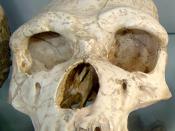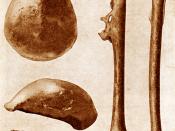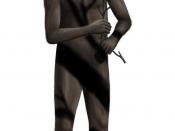This is a good solid paper Try to use more specifics
The evolutionary relationships of Australopithecus and Homo are still argued today among top anthropologists. The direct human phylogeny is not certain, and many links to modern man from four million years ago are possible. What is not argued, however, is that the evolution of man was an evolution from the neck up, rather than from the neck down. After our transition from the arboreal region of Africa to the terrestrial area of the savanna, our physiology below the neck, for the most part, has not changed. As a result, differences among each hominid are not as distinct as some would hope. In example, the comparison between Australopithecus africanus and Homo erectus can be classified as one of degree, not kind. A. africanus, "the southern ape of Africa," inhabited the Africa region around 2.6 to 2.0 MYA, while Homo erectus, "upright man," encompassed the land around 1.6
to about 1/2 MYA. Despite over one million years of evolution, the differences between the two hominids is limited, and many physical, behavioral, and natural environment adaptations are shared. Instead, a slow, progressive evolution of man is represented between A. africanus and Homo erectus.
During the mid-nineteenth century, the great scientist Charles Darwin predicted human evolution to be in Eastern Africa. Sure enough, in 1851 a Dutch anatomist named Eugene Dubois discovered the remains of a hominid at the East African Coast that was classified Homo erectus because of its depiction of bipedalism. Other specimens that represented Homo erectus were excavated in Asia, and the Peking Man for a while, was thought to be the oldest descendant of man (Reader 91). This belief held up for a while until Professor Dart found the first fossil of A. africanus at Taung, South...


